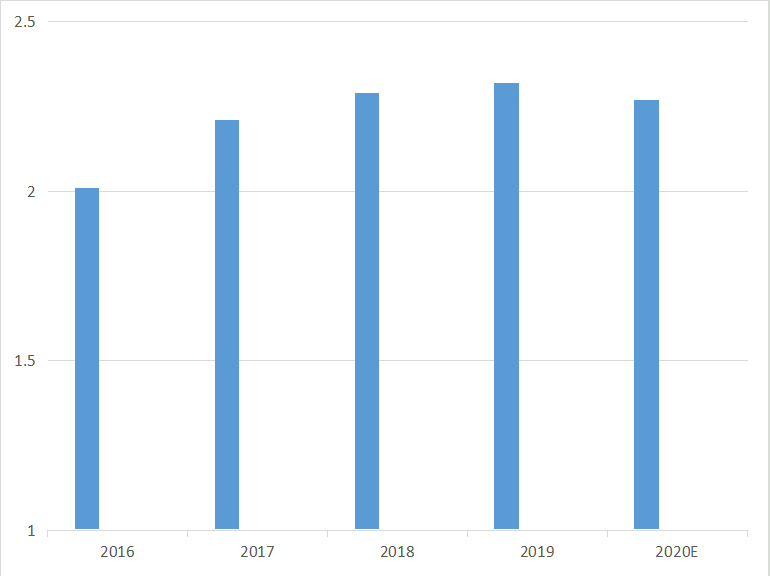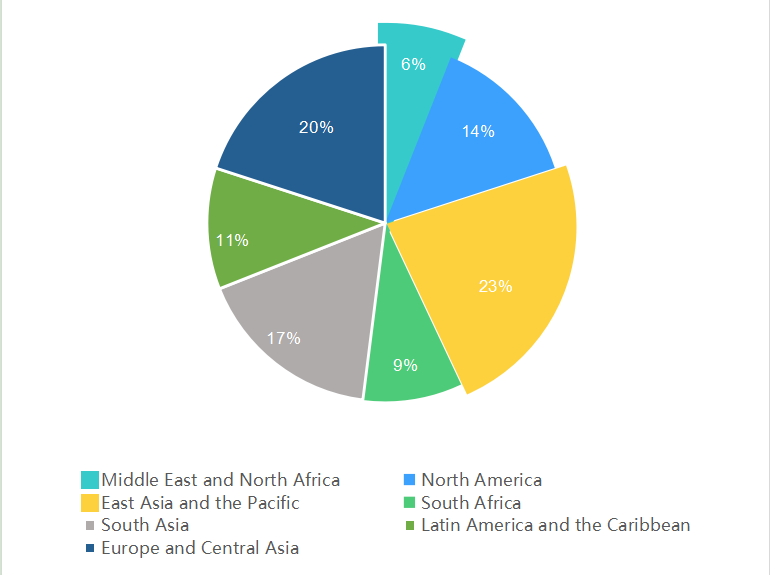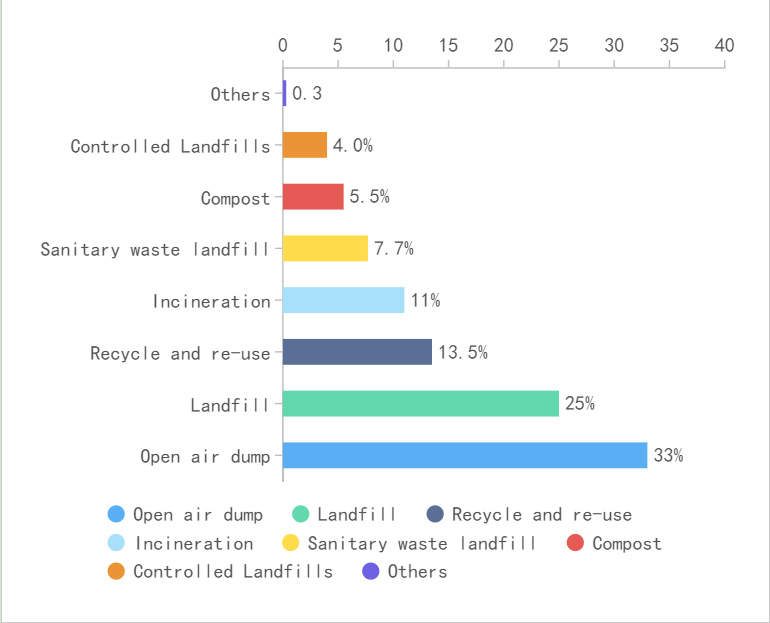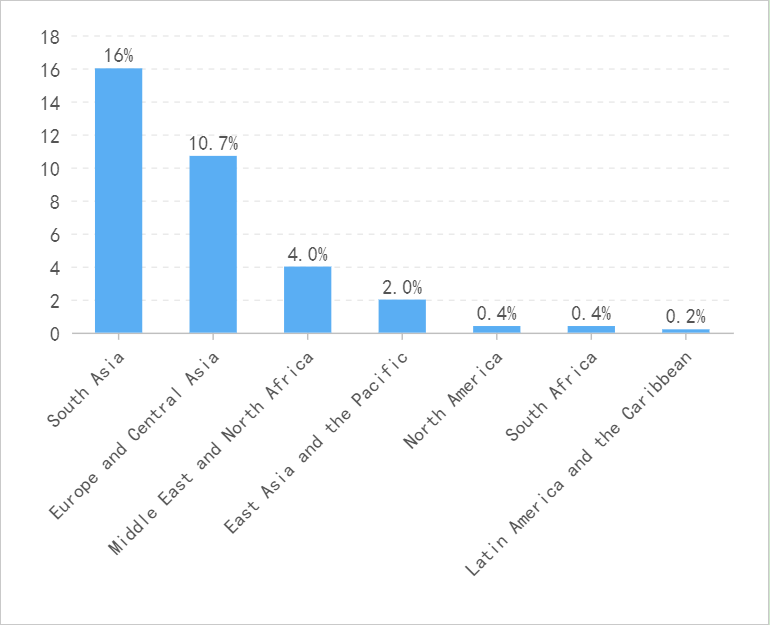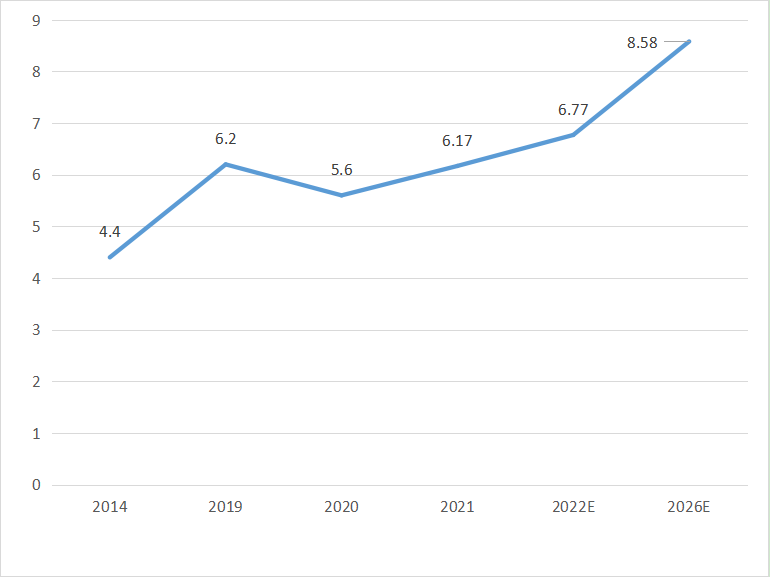As a waste treatment method, composting refers to the use of bacteria, actinomycetes, fungi, and other microorganisms widely distributed in nature to promote the transformation of biodegradable organic matter into stable humus in a controlled manner under certain artificial conditions. The biochemical process is essentially a fermentation process. Composting has two obvious advantages: first, it can turn nasty waste into easily disposed of materials, and second, it can create valuable commodities and compostable products. At present, global waste production is growing rapidly, and the demand for composting treatment is also increasing. The improvement of composting technology and equipment promotes the continuous development of the composting industry, and the global composting industry market continues to expand.
Global solid waste generation exceeds 2.2 billion tons
Driven by rapid global urbanization and population growth, global solid waste generation is increasing year by year. According to the data published in “WHAT A WASTE 2.0″ released by the World Bank in 2018, the global solid waste generation in 2016 reached 2.01 billion Ton, forward-looking according to the forecast model published in “WHAT A WASTE 2.0″: Proxy waste generation per capita=1647.41-419.73In(GDP per capita)+29.43 In(GDP per capita)2, using the global per capita GDP value released by OECD According to calculations, it is estimated that the global solid waste generation in 2019 will reach 2.32 billion tons.
According to the data released by the IMF, the global GDP growth rate in 2020 will be -3.27%, and the global GDP in 2020 will be approximately US$85.1 trillion. Based on this, it is estimated that the global solid waste generation in 2020 will be 2.27 billion tons.
Chart 1: 2016-2020 global solid waste generation (unit:Billion tons)
Note: The statistical scope of the above data does not include the amount of agricultural waste generated, the same as below.
According to the data released by “WHAT A WASTE 2.0″, from the perspective of the regional distribution of global solid waste production, East Asia and the Pacific region generate the largest amount of solid waste, accounting for 23% of the world, followed by Europe and Central Asia. The amount of solid waste generated in South Asia accounts for 17% of the world, and the amount of solid waste generated in North America accounts for 14% of the world.
Chart 2: Regional distribution of global solid waste production (unit: %)
South Asia has the highest proportion of composting
According to the data published in “WHAT A WASTE 2.0″, the proportion of solid waste treated by composting in the world is 5.5%. %, followed by Europe and Central Asia, where the proportion of composting waste is 10.7%.
Chart 3: Proportion of Global Solid Waste Treatment Methods (Unit: %)
Chart 4: Waste composting ratio in different regions of the world(Unit: %)
The global composting industry market size is expected to approach $9 billion in 2026
The global composting industry has opportunities in agriculture, home gardening, landscaping, horticulture, and construction industries. According to data released by Lucintel, the global composting industry market size was US$6.2 billion in 2019. Due to the global economic recession caused by COVID-19, the global composting industry market size will drop to about US$5.6 billion in 2020, and then the market will start in 2021. Witnessing a recovery, it is projected to reach USD 8.58 billion by 2026, at a CAGR of 5% to 7% from 2020 to 2026.
Chart 5: 2014-2026 Global Composting Industry Market Size and Forecast (Unit: Billion USD)
Post time: Feb-02-2023

